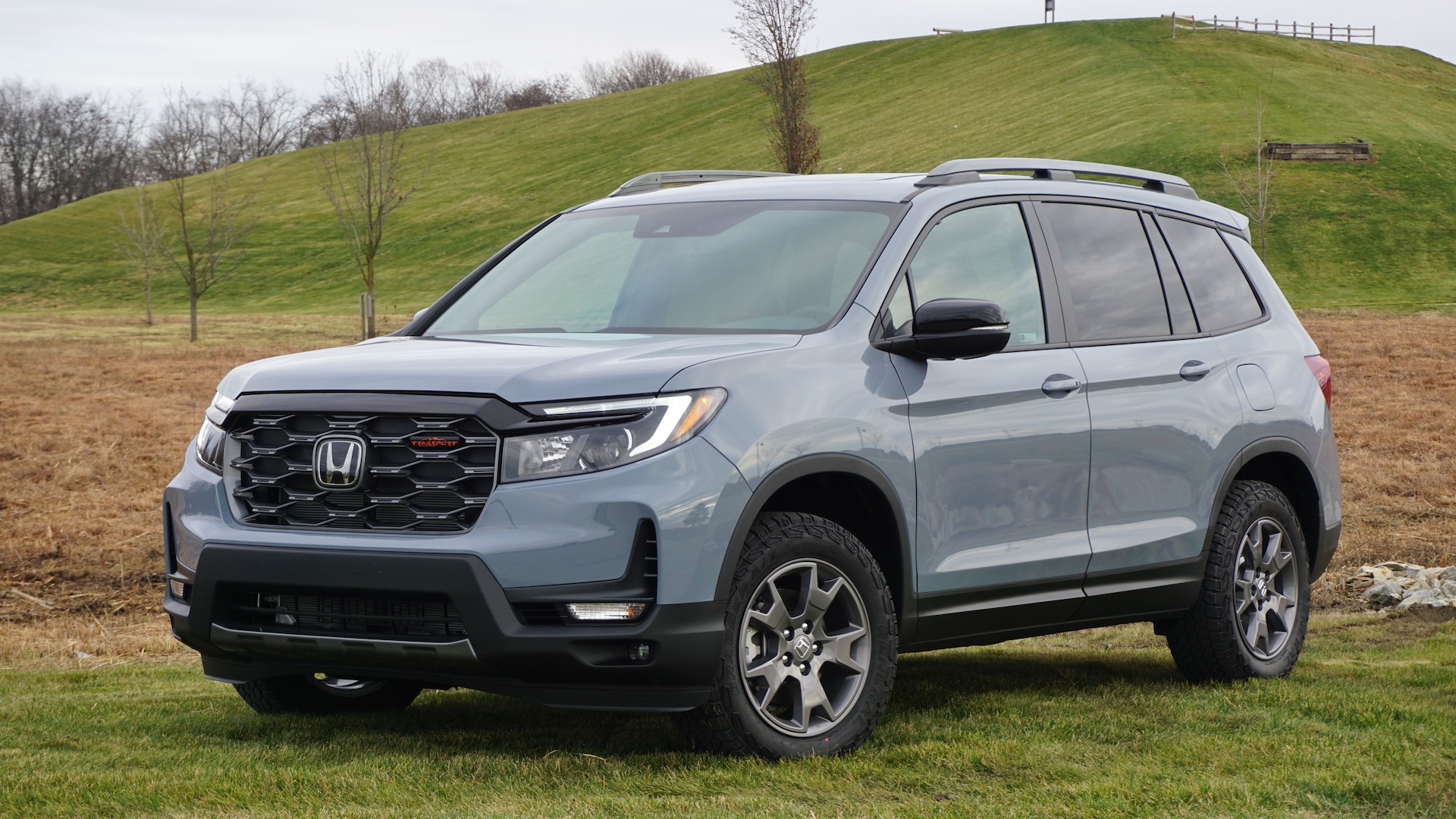Modern SUVs are more than just tough off-roaders or spacious family haulers they’re rolling computers. With infotainment systems, navigation software, safety protocols, and performance tuning all increasingly managed by code, software updates can make or break the long-term ownership experience.
Some automakers embrace the Tesla-like model of free over-the-air (OTA) updates to improve their vehicles over time, while others still treat map packs and system upgrades as a paid luxury.
Here’s a look at 5 SUVs that offer free software updates and 5 that still charge you for something as basic as new maps.
SUVs Offering Free Software Updates
In today’s auto industry, software is just as important as horsepower. As vehicles become more connected and tech-driven, carmakers are racing to deliver smarter, safer, and more customizable driving experiences—not just through hardware, but through over-the-air (OTA) software updates.
What was once a feature exclusive to high-end EVs is now making its way into mainstream SUVs, offering owners everything from improved performance and infotainment to enhanced safety systems—often at no extra cost.
In this article, we explore the growing list of SUVs that not only keep you moving but keep evolving, thanks to free software updates that future-proof your ride long after it leaves the dealership lot.
1. Tesla Model Y
Tesla leads the way with over-the-air software updates that enhance everything from battery efficiency to self-driving capabilities and even add new entertainment features.
Model Y owners routinely receive new features, bug fixes, and performance improvements at no additional cost.
The 2025 Tesla Model Y offers a surprisingly agile and athletic driving experience, feeling smaller and sportier than its exterior dimensions imply. It handles tight spaces with ease and remains composed on twisty roads, thanks to sharp steering response and minimal body roll. However, this nimbleness comes at the cost of ride comfort.
The suspension can feel borderline harsh, particularly when encountering rough pavement or when equipped with the larger wheels and stiffer performance suspension included in the Model Y Performance trim.
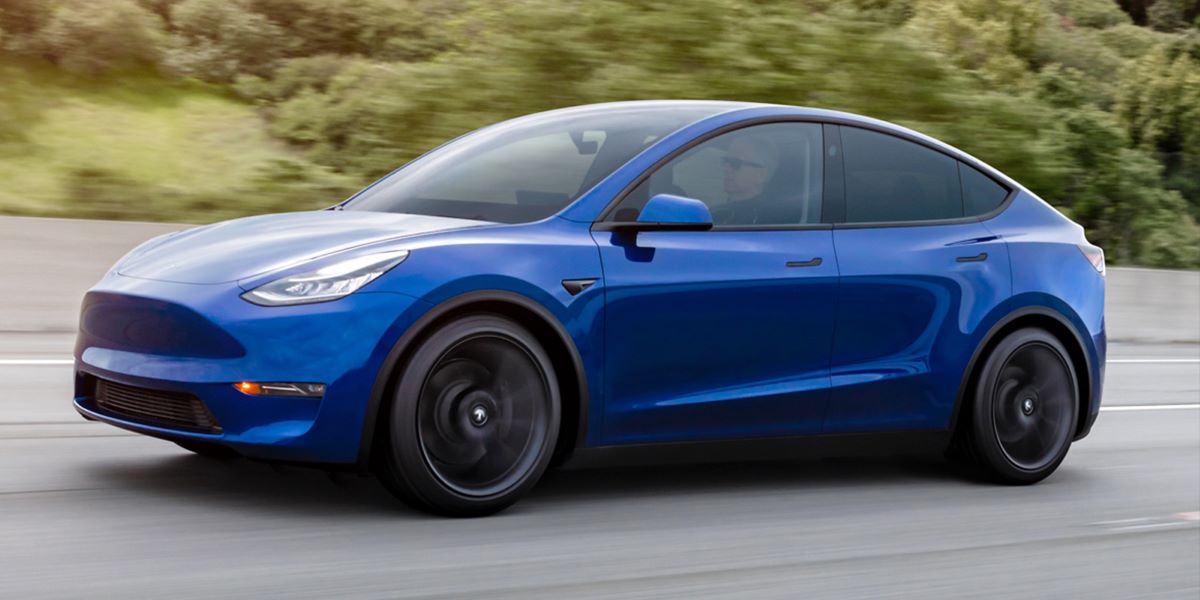
Tesla’s regenerative braking system, designed specifically for EVs, works smoothly and enables one-pedal driving in most conditions—lifting off the accelerator provides significant deceleration.
The base version of the Model Y is equipped with a single-motor, rear-wheel-drive setup. While its 0–60 mph time of 6.5 seconds might not seem especially quick on paper, the instant torque delivery gives it a lively feel from a standstill.
Stepping up to the dual-motor, all-wheel-drive variant shaves that time to 4.8 seconds, and the boost in acceleration is immediately noticeable. At the top of the lineup is the Model Y Performance, which is engineered for speed. Tesla claims it can rocket from 0 to 60 mph in just 3.5 seconds and reach a top speed of 155 mph.
2. Ford Mustang Mach-E
Ford has invested heavily in its “Power-Up” software platform, which allows the Mach-E to receive OTA updates that improve the user interface, add new driver-assist features, and enhance system performance.
These updates are delivered free for the life of the vehicle.
Our preferred version of the Ford Mustang Mach-E is the entry-level Standard Range RWD (rear-wheel drive). Powered by a 264bhp motor, it accelerates from 0 to 62mph in 6.7 seconds—ample performance for most daily driving needs and comparable to a similarly priced VW ID.4 Pro.
While the Standard Range RWD has an official range of 292 miles, our real-world testing with an earlier model yielded a more realistic 211 miles.
The Extended Range RWD variant ups the power to 290bhp, but the larger battery it carries means only a minor improvement in acceleration—just 0.3 seconds quicker than the Standard Range version. However, its official range stretches to 372 miles. During our evaluations, it achieved 302 miles in summer and 247 miles in colder conditions.
For added grip and performance, the Extended Range AWD version uses two electric motors to produce 365bhp. It sprints from 0 to 62mph in just 4.3 seconds, though the additional performance slightly reduces range to an official 341 miles.
For those prioritizing outright performance, the Mach-E GT is the model to target. This version receives a significant boost in power, producing a combined 480bhp and completing the 0–62mph dash in a claimed 4.1 seconds.
While this is quick, it’s not quite on par with the Tesla Model Y Performance or the Kia EV6 GT. The GT’s official range stands at 310 miles, compared to the Model Y Performance’s 319 miles and the EV6 GT’s 263 miles.
Despite its agility, the Mach-E is a heavy vehicle, tipping the scales at over two tonnes. That weight makes itself known when cornering, as the body leans onto the outside wheels.
Still, it’s manageable and, unlike the more planted feel of the Audi Q4 e-tron or VW ID.4, the Mach-E has a more playful attitude in the bends. With traction control off, the rear-wheel-drive versions can even be coaxed into a mild slide out of corners, while the AWD models send enough power rearward to avoid excessive understeer.
That said, the ride and handling balance doesn’t lead the class. The steering is quick but lacks consistent weighting, and front-end grip could be stronger. A revised suspension setup on current models has improved high-speed ride quality, making the car feel more composed over undulating roads.

However, issues remain. At lower speeds, while the suspension absorbs smaller imperfections reasonably well, it still transmits a noticeable firmness into the cabin that makes rough surfaces tiring over time.
Larger bumps continue to jostle occupants more than rivals. The Kia EV6, for example, feels more agile, and models like the Q4 e-tron, Toyota bZ4X, and Genesis GV60 offer a calmer, more relaxing experience at speed.
The GT version adds adaptive suspension and a lower ride height, which improves body control and boosts confidence on twisty roads. Yet in its firmest setting—called Untamed mode—the ride becomes overly harsh, with even small road imperfections being felt sharply.
Like the EV6 GT, the Mach-E GT struggles to establish a fluid rhythm on back roads and lacks the precise handling of something like the BMW iX3, which, though slower, offers more confidence behind the wheel. If you’re open to a non-SUV, the Hyundai Ioniq 5 N offers better dynamics at a lower price.
In terms of refinement, the Mustang Mach-E is average for an electric SUV. Wind noise is kept in check at motorway speeds, but more road noise seeps in compared to rivals, especially in four-wheel-drive versions where the electric motor can produce a notable whine.
Over broken surfaces, the suspension and tires transmit plenty of thuds into the cabin—though it’s not as harsh as the Tesla Model Y. There’s also a peculiar vibration in the brake pedal, likely caused by the heat pump in operation.
Throttle and brake response could use fine-tuning as well. Outside of Whisper mode—the softest of the three driving modes—the car’s throttle is too eager, making smooth launches difficult.
Brake pedal feel is inconsistent, complicating smooth stops. The one-pedal driving mode functions as advertised, bringing the car to a halt in most scenarios simply by lifting off the accelerator.
Additionally, Ford offers BlueCruise, a subscription-based driver-assist system that enables hands-free driving on certain motorways. It operates smoothly and maintains lane positioning with precision.
3. Hyundai Ioniq 5
The Ioniq 5 comes with Hyundai’s Bluelink and Connected Car Services that include free software and map updates for several years.
Hyundai also began offering OTA firmware upgrades starting with 2023 models, with many updates focused on infotainment and battery management.
The 2025 Hyundai Ioniq 5 may appear largely unchanged from the previous model year, but it receives several notable upgrades that enhance its appeal. One of the most significant improvements is the increase in the larger battery pack’s capacity—from 77.4 kWh to 84.0 kWh.
Hyundai claims this update boosts the SUV’s range, raising it from the 2024 model’s EPA-estimated 303 miles to an estimated 318 miles per charge for 2025. Another major change is the adoption of the NACS (North American Charging Standard) charging port, which reflects the industry’s move toward greater compatibility; a CCS adapter is also included for added convenience.
A rugged new XRT trim joins the lineup, offering a higher ride height, all-terrain tires, redesigned bumpers, and other rugged visual cues to give the Ioniq 5 a more adventurous stance.
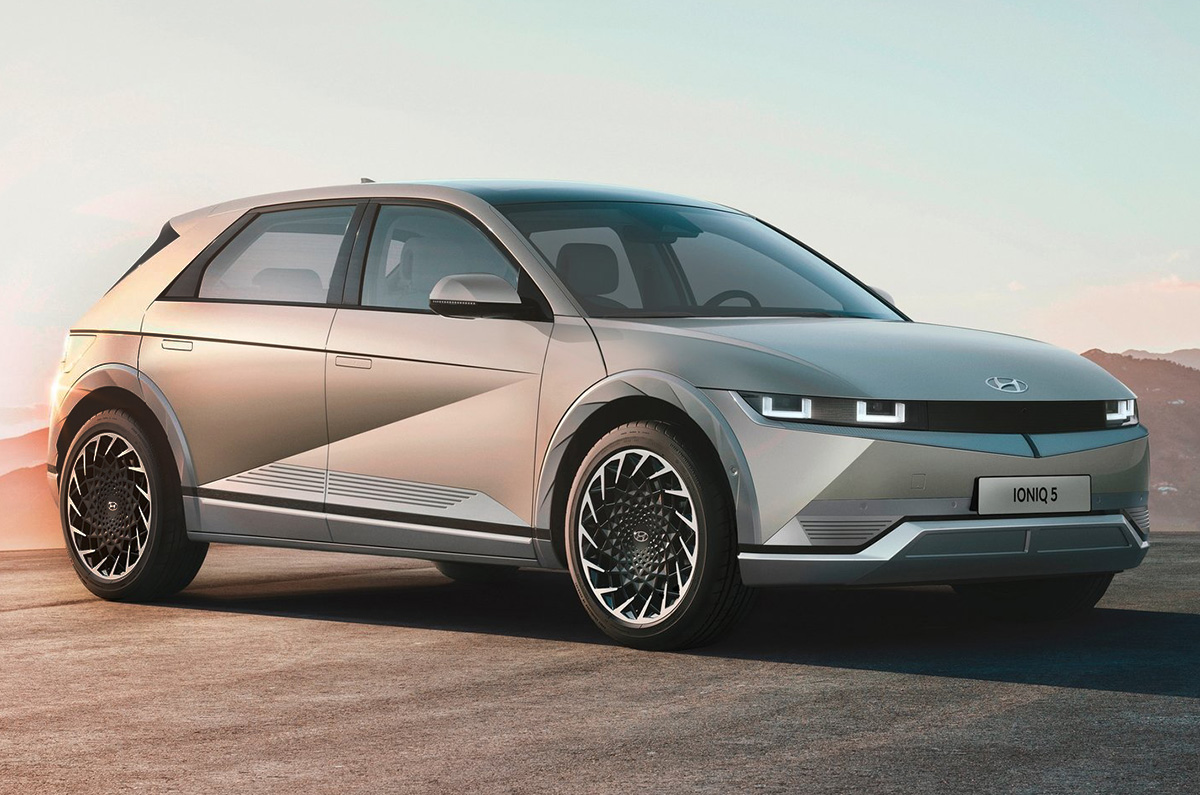
Additionally, all trims receive subtle exterior tweaks, including refreshed front and rear bumpers, a slightly larger rear spoiler, and a long-overdue rear windshield wiper—an essential addition for maintaining rear visibility in rain or snow. Interior updates focus on improving convenience and functionality.
The wireless smartphone charging pad has been repositioned to the top panel of the center console, while a new set of physical buttons allows easier access to frequently used features such as the heated seats and heated steering wheel.
The infotainment system has been updated to the latest version, and the list of driver-assistance features now includes a more advanced lane-keeping assist system and a side-impact collision avoidance feature.
Among these, the rear-wheel-drive SEL trim stands out as the best value, offering an estimated 318-mile range and 225 horsepower for around $51,000.
It comes standard with a heated steering wheel, an auto-dimming rearview mirror, front and rear parking sensors, a power-operated liftgate, and adaptive cruise control with a lane-centering feature—making it a well-rounded choice for drivers seeking a solid balance of range, comfort, and technology.
4. Volkswagen ID.4
The ID.4 benefits from Volkswagen’s new OTA infrastructure that allows free updates to the infotainment system, navigation, and even driving dynamics.
While earlier models had limited functionality, recent updates have made the experience smoother and cost-free for users.
Volkswagen’s electric SUV, the ID.4, is on track to receive a comprehensive facelift inside and out. As part of the automaker’s effort to unify the look and feel of its EV lineup, the ID.4 will be updated to reflect Volkswagen’s evolving design language—most notably showcased by the upcoming entry-level ID.2.
Although the ID.4 already received significant updates for the 2024 model year, this upcoming revision marks the SUV’s second major refresh.
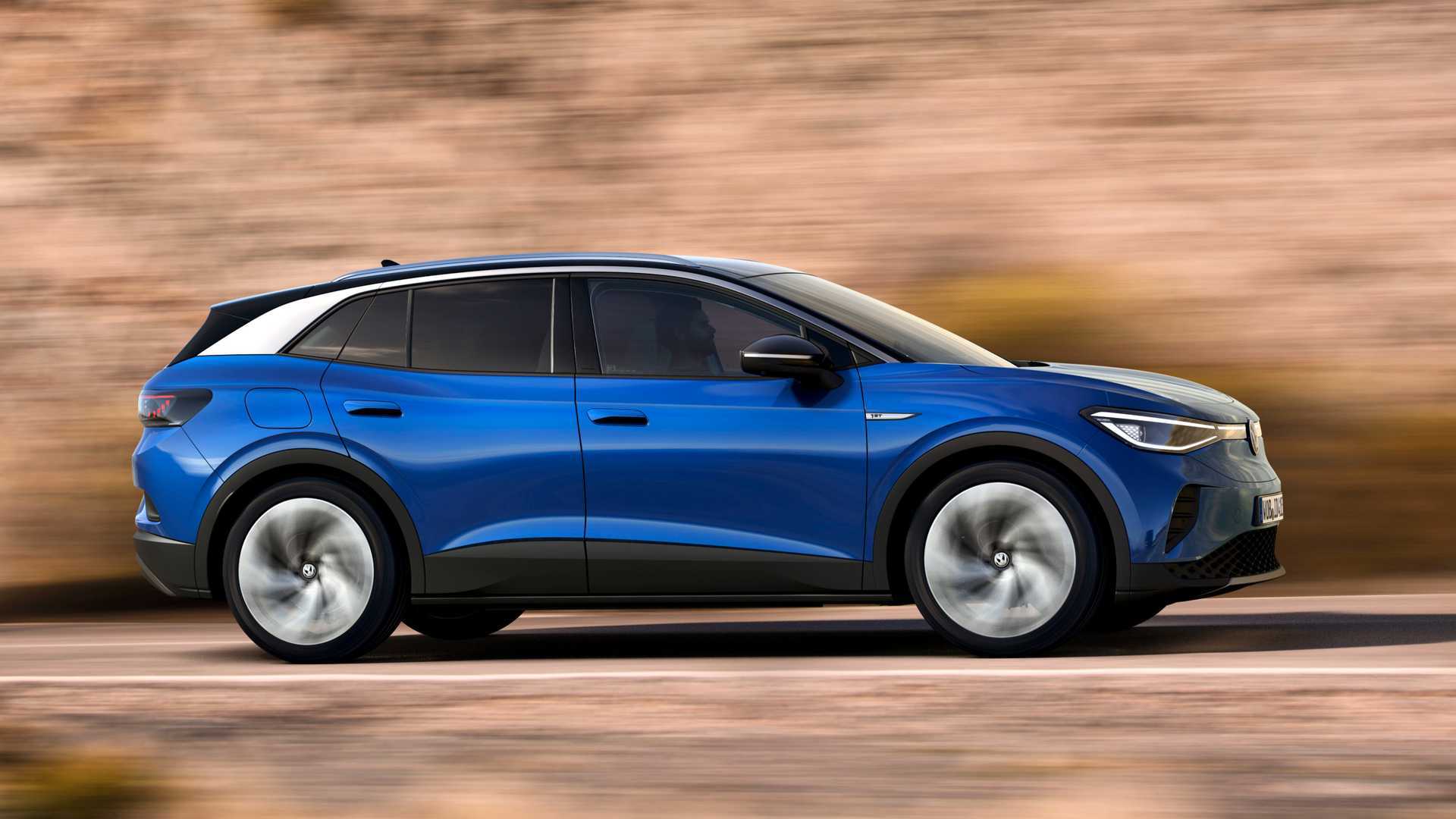
Inspired by the ID.2all concept first revealed in 2023, the updated ID.4 will showcase Volkswagen’s latest design cues. These include a redesigned front fascia, a more assertive stance, and refined character lines that convey a cleaner, more contemporary appearance.
In addition to exterior styling changes, Volkswagen is planning a substantial interior overhaul. This will include a redesigned dashboard and a return to more tactile controls. “We’re going to bring back a round knob for the volume control,” a Volkswagen insider told Autocar, emphasizing that “it has worked for years, there’s no reason to replace it.”
A preview of these interior changes came with the ID.2all concept, whose cabin offers a glimpse at the future direction of Volkswagen’s EV interiors. With this direction in mind, the updated ID.4 aims to merge modern design with user-friendly functionality, bridging the gap between innovation and practicality in Volkswagen’s expanding EV lineup.
5. Rivian R1S
Rivian’s electric SUV, the R1S, receives routine OTA updates free of charge.
These updates aren’t just bug fixes they often include feature expansions, such as improved ride quality tuning, new UI elements, and better range estimation algorithms.
Rivian’s R1S enters 2025 as a fundamentally redesigned vehicle, even if its appearance might not give that away at first glance. Beneath the familiar sheet metal—which retains the same friendly two-box silhouette introduced in 2022—lies a host of significant updates.
The R1S now boasts entirely new batteries, motors, software, and even a revamped wiring architecture. Visually, however, the SUV remains largely unchanged, making its transformation more evolutionary than immediately obvious.
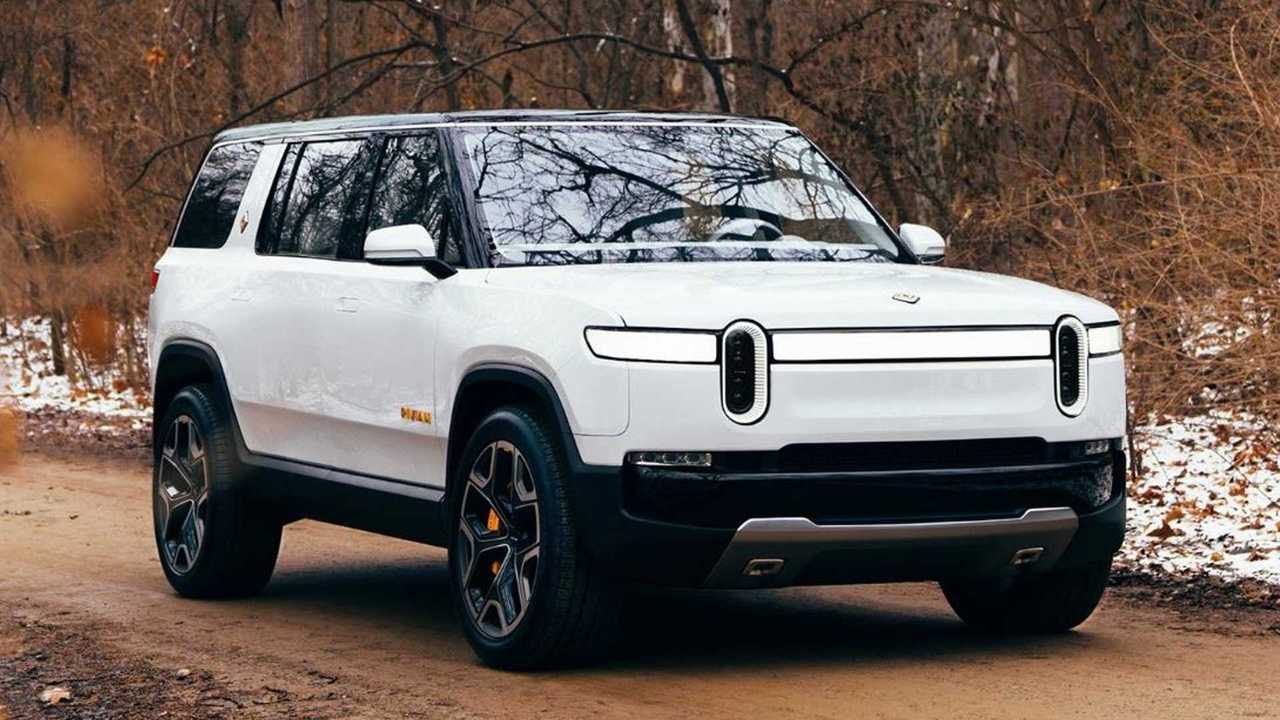
What has changed more noticeably is the landscape in which the R1S competes. When it first launched, the R1S was one of the few options available for buyers seeking an electric SUV with a traditional three-row layout.
That unique position has since eroded, as a growing wave of EVs from both emerging startups and well-established automakers have entered the space. The competition has made it increasingly difficult for the R1S to stand out as the obvious choice in its category.
For 2025, the R1S carries a starting price of $75,900, positioning it directly against new rivals such as the Kia EV9 GT-Line. That price point means Rivian’s base model now competes head-to-head with some of the most well-equipped alternatives in the market, adding pressure in an already crowded segment.
SUVs That Charge for Map Packs
As vehicles become more software-driven, automakers are finding new ways to monetize features that used to come standard—or were at least one-time purchases. Charging SUV owners for updated navigation maps.
While some brands continue to offer free over-the-air updates or lifetime map coverage, others are now bundling updated maps into pricey subscription plans or paid packages. In this article, we break down which SUVs are charging for map packs, what those fees look like, and whether you’re getting your money’s worth—or just another line item in the age of connected cars.
1. Toyota Highlander
Despite Toyota’s reputation for reliability, many of their infotainment systems including those in the Highlander require a paid subscription for updated maps and navigation data.
While some models include a free trial period, continued access can cost up to $129 per year.
The Highlander is long overdue for a major redesign, and it looks like Toyota is finally preparing to give its family-friendly SUV a substantial update. However, the changes appear to be focused primarily on the version sold in China, and it’s still uncertain whether similar updates will be applied to models offered in other markets.
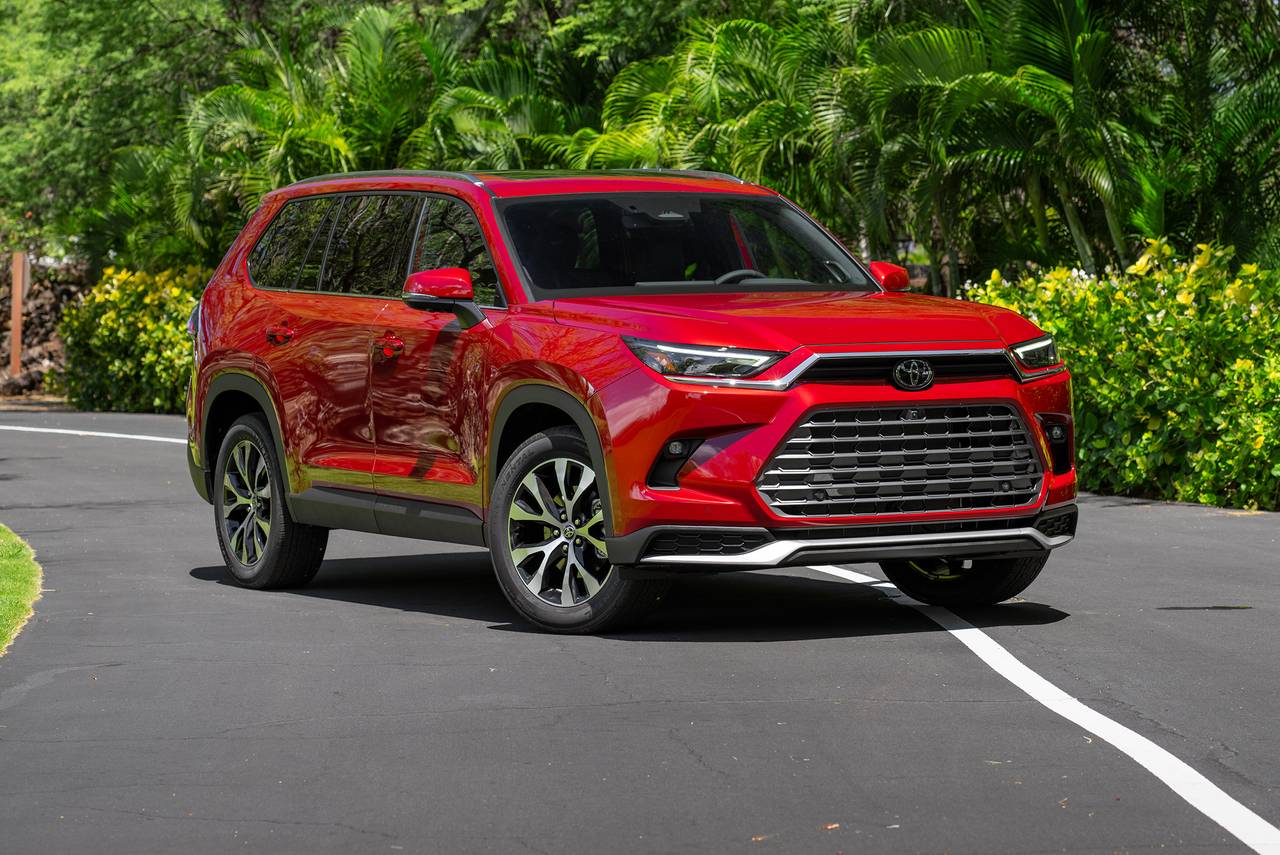
So, what can customers expect? One of the key upgrades is expected to be a next-generation range-extender electric powertrain—a system that’s also rumored to be making its way into the upcoming Sienna minivan.
Why would Toyota go with a range-extender hybrid instead of a full battery-electric setup? The decision likely comes down to market realities. A hybrid that uses electric motors to drive the wheels, with a small internal combustion engine acting purely as a generator, could be more appealing to buyers in the current climate than a fully electric vehicle.
As for North America, it’s still unclear if the new Highlander will be offered there in this configuration. However, Toyota is expected to roll out the refreshed version of the Highlander in China by 2027.
2. Honda Passport
The Passport’s navigation system, if not running through Apple CarPlay or Android Auto, requires paid map updates via Garmin’s navigation update portal.
These updates can cost $99 or more, and there’s no OTA delivery updates require manual downloads or USB transfers.
Since Honda revived the Passport badge in 2019, the SUV has comfortably occupied a middle ground in the brand’s lineup—larger and more capable than the CR-V, but smaller and less family-focused than the three-row Pilot.
However, as rivals like the Nissan Pathfinder Rock Creek Edition and Hyundai Santa Fe XRT have leaned harder into rugged looks and off-road capability, the Passport is no longer content to quietly sit on the sidelines.
Enter the fully redesigned 2026 Honda Passport, which arrives with a tougher exterior and meaningful mechanical upgrades aimed at boosting its appeal both in dealerships and off the beaten path.
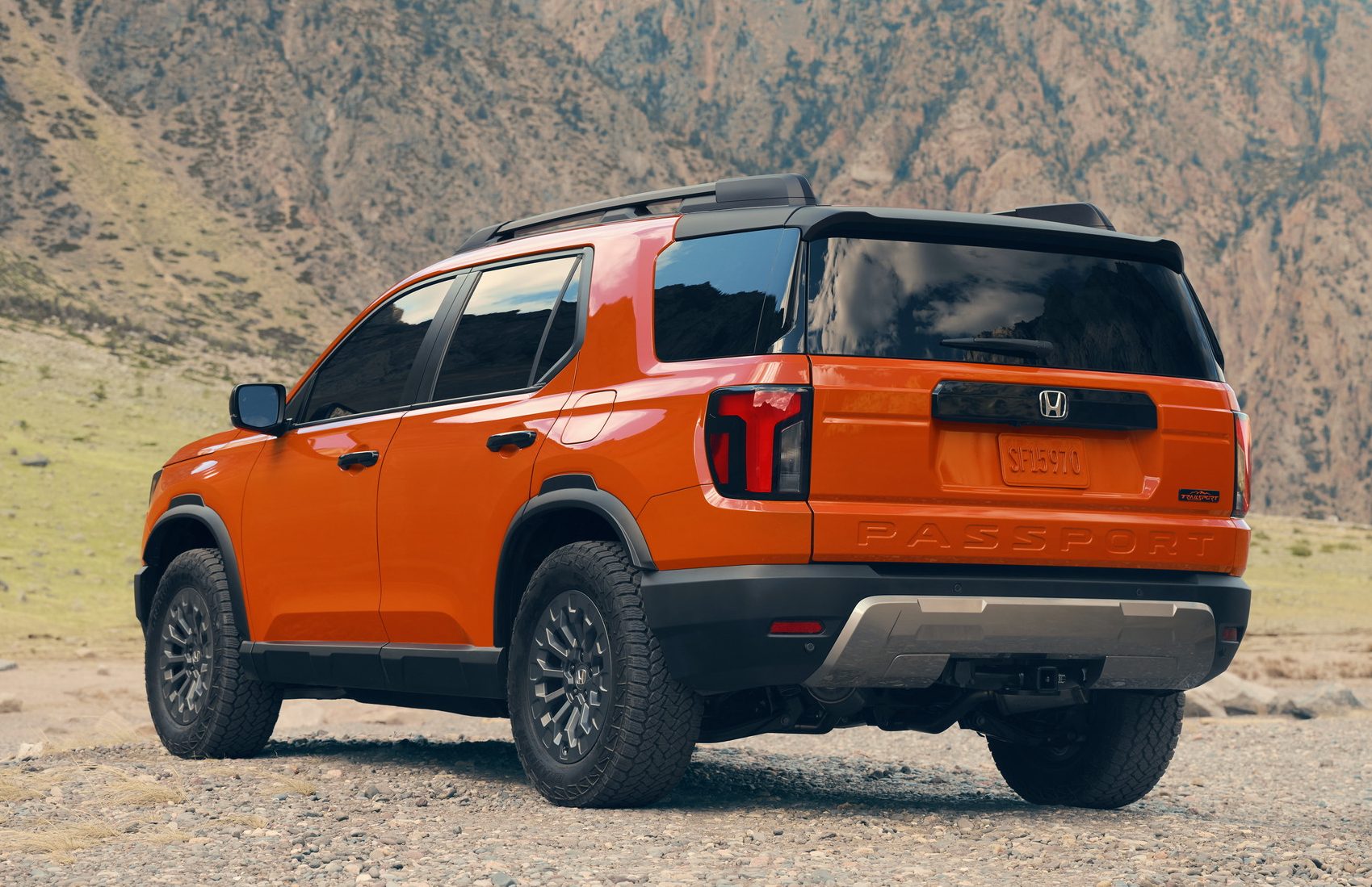
The new model benefits from a reinforced chassis and a strengthened suspension setup, while inside, it receives updated tech and revised styling. Visually, the Passport adopts a more aggressive look—something akin to a mix between a Toyota 4Runner and a Ford Bronco Sport. That’s not a slight—it’s a nod to its newfound rugged personality.
Under the hood, the familiar 3.5-liter V-6 is back but now delivers more horsepower, paired with a 10-speed automatic transmission that’s new to the Passport. Power is routed through an enhanced all-wheel-drive system that promises better performance in rough terrain.
Practicality hasn’t taken a back seat either. A longer wheelbase unlocks more room for rear passengers and cargo, while a shorter front overhang improves the approach angle—giving it a better shot at clearing trail obstacles. All told, the 2026 Passport is looking far more prepared for adventure than any of its recent predecessors.
3. BMW X5
BMW is infamous for subscription-based features, and the X5’s built-in navigation follows suit.
While the system is sleek, updated map packs often come at a cost unless bundled with the premium ConnectedDrive package. Many owners choose to rely on mobile apps to avoid these fees.
In recent years, BMW has steered its mainstream models toward a more luxurious and tech-focused identity, dialing back some of the brand’s signature driving engagement in the process.
The mid-size X5 SUV is no exception. Available with a turbocharged inline-six, a twin-turbo V-8, or a plug-in hybrid setup (the latter reviewed separately), every X5 variant delivers robust power and strong straight-line speed.
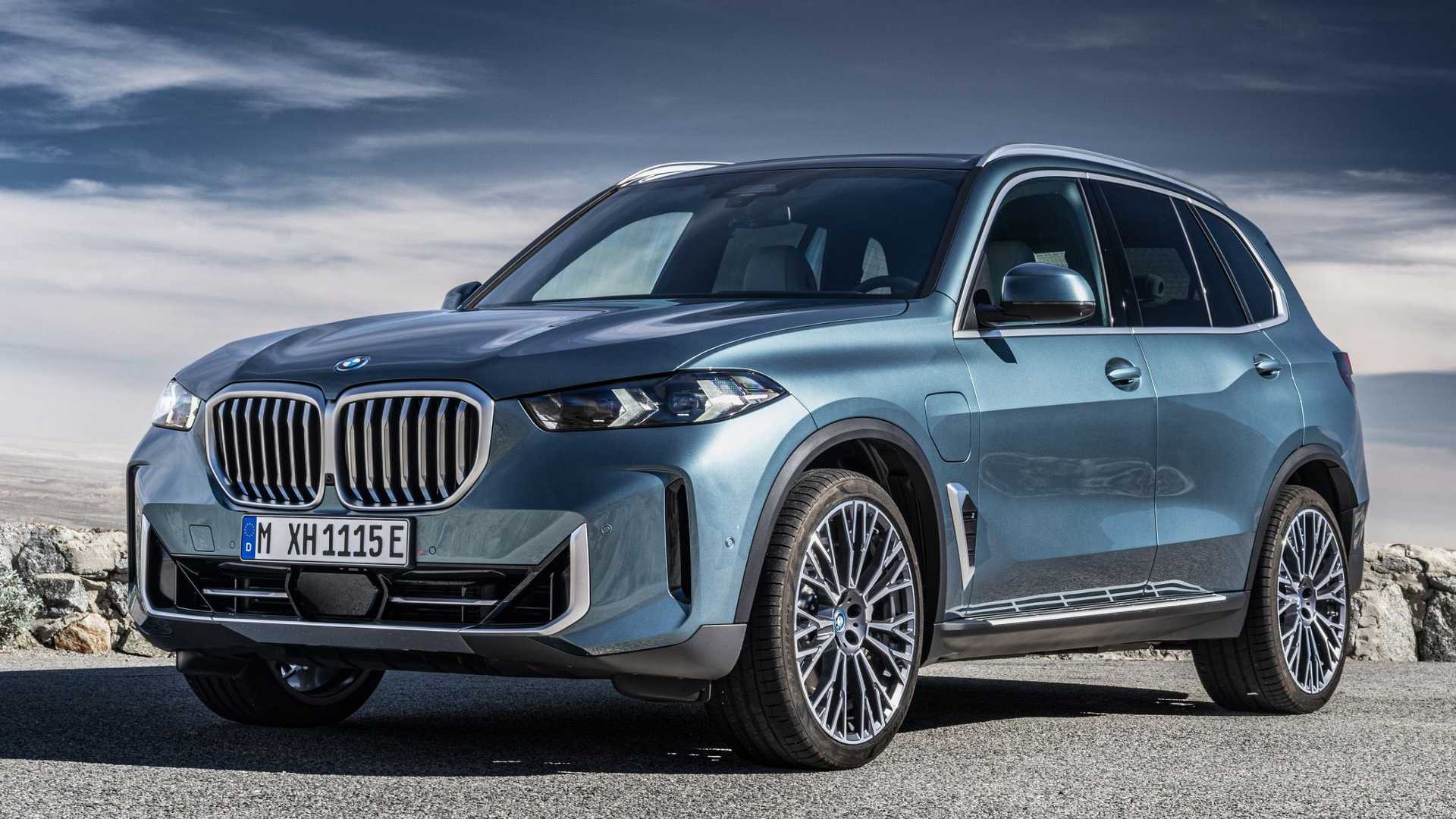
While the X5’s handling remains engaging, it doesn’t quite match the razor-sharp dynamics of rivals like the Porsche Cayenne. Similarly, its ride quality is composed and comfortable, but not quite as plush as that of the Genesis GV80.
What truly stands out in the X5 is its suite of tech features, led by a state-of-the-art infotainment system housed in an elegant curved dashboard display. BMW also offers a strong lineup of driver-assistance technologies, including the optional Highway Assist system, which enables hands-free driving on extended highway journeys.
The X5 ultimately presents a well-rounded luxury SUV experience: refined, capable, and packed with upscale amenities. If you’re looking for a more coupe-like silhouette, the sportier X6 might appeal more. For drivers chasing high performance, the formidable X5 M—reviewed separately—delivers serious firepower.
4. Lexus RX
Although premium, the Lexus RX doesn’t always come with lifetime map updates. After an initial trial, map pack updates typically cost extra, and navigation improvements are tied to dealer-installed updates or annual subscriptions, making it less convenient for users.
The midsize luxury SUV market may be crowded, but the Lexus RX distinguishes itself with a substantial redesign introduced for the 2023 model year.
The latest iteration features a sleek exterior that refines the brand’s signature spindle grille, creating a more understated and elegant look. Inside, the RX boasts a thoroughly modern cabin anchored by large, high-definition displays that enhance the overall tech-forward experience.
One of the RX’s biggest strengths is its wide range of available drivetrains. From the base RX350 with a turbocharged four-cylinder engine to the sophisticated plug-in hybrid RX450h+, there’s a version to suit a variety of needs and preferences.

That said, the base engine and its automatic transmission left us underwhelmed, lacking both the liveliness and smoothness we expect—something highlighted in our First Test of the F Sport variant.
In contrast, we find the hybrid models to be far more satisfying. The RX 350h, for instance, impressed us with its quiet demeanor and refined ride, even though the steering felt somewhat numb.
New for 2024, the RX450h+ brings a compelling 37 miles of electric-only range. While it carries a steep price tag, its blend of comfort and composed handling make it a standout in the lineup.
At the sportier end of the spectrum, the RX500h is marketed as the performance-oriented choice. In a comparison with the Mercedes-Benz GLE450e 4Matic, the RX500h came out ahead thanks to its dynamic ride, engaging handling, and robust tech suite. It also edged out the Acura RDX Type S in a head-to-head evaluation.
Its performance doesn’t fully live up to its aggressive styling. Lexus adds extra visual punch with the RX500h’s available Black Line package, which includes bold orange brake calipers for those who want a sportier aesthetic.
5. Jeep Grand Cherokee
While the Grand Cherokee boasts off-road navigation features, its Uconnect system requires paid updates for built-in maps after a complimentary period.
Uconnect map packs can cost upwards of $150, depending on the region and features included.
The Jeep Grand Cherokee has evolved into a cornerstone of the brand’s SUV lineup, branching out into a family of models that include the standard two-row version, the plug-in hybrid Grand Cherokee 4xe, and the three-row Grand Cherokee L—each reviewed separately.
With nine trims available, ranging from the no-frills Laredo to the luxurious Summit Reserve, the Grand Cherokee caters to a broad spectrum of buyers.
The nonhybrid two-row variant comes equipped with a capable V-6 engine and offers multiple all-wheel-drive systems, though lower trims come standard with rear-wheel drive. Despite its rugged roots, the Grand Cherokee proves to be a smooth and composed ride on pavement, and its cabin is spacious and thoroughly modern.
Given its wide variety of trims and capabilities, the Grand Cherokee competes with everything from budget-friendly SUVs like the Honda Passport to luxury two-row rivals from BMW and Mercedes-Benz.
For 2025, Jeep keeps the updates minimal, with the only notable change being a price drop across the lineup. Pricing starts at $38,490 and climbs to $65,035 for the range-topping Summit Reserve, putting it at a higher entry point than rivals like the Kia Telluride and Hyundai Palisade. While that might feel like a “Jeep-brand tax,” we think the Limited trim offers the best balance of value and luxury.
It comes well-equipped with leather seats, a power liftgate, heated front and rear seats, power-adjustable front seats, ambient interior lighting, auto high beams, and remote start. For buyers seeking more upscale touches, the Lux Tech Group II package adds features like rain-sensing wipers, wireless charging, ventilated seats, a digital rearview mirror, and a 360-degree camera system, among others.
Under the hood, the standard Grand Cherokee runs on a 293-hp 3.6-liter V-6 engine. Rear-wheel drive is standard, but several all-wheel-drive systems are available, including a top-tier setup with an electronically locking rear differential. The Trailhawk trim goes a step further with Quadra-Drive II AWD and a front anti-roll bar disconnect for improved off-road articulation.
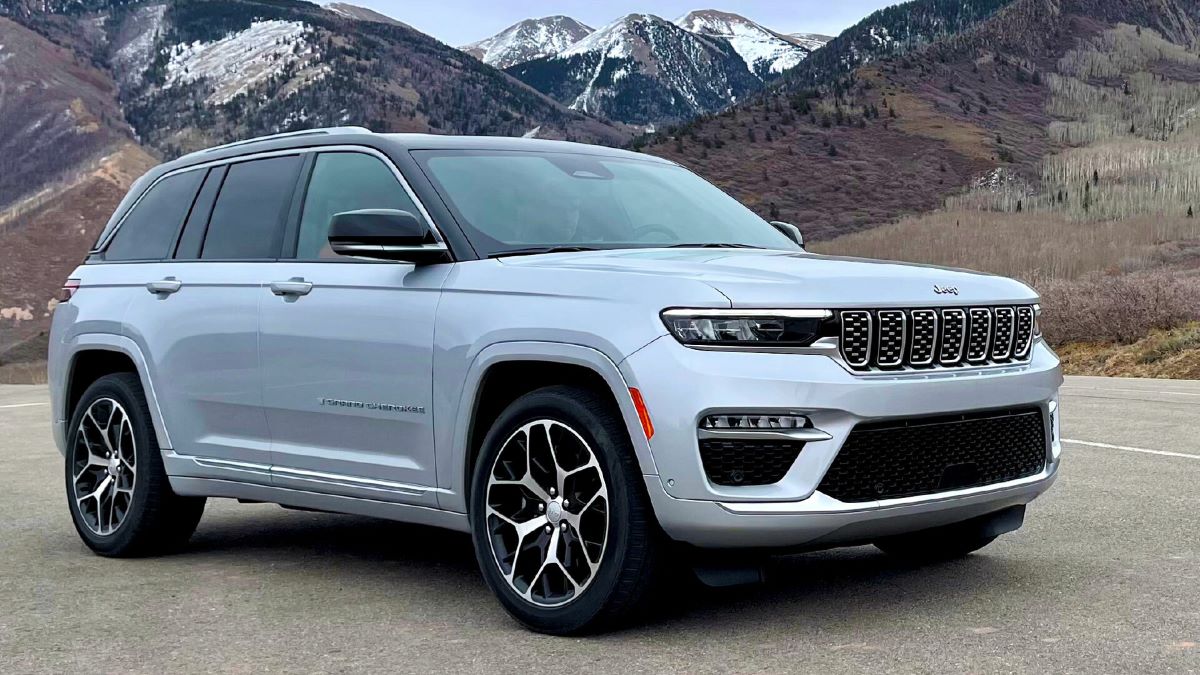
On-road manners are solid across the board, especially in higher trims equipped with air suspension and adaptive dampers. In performance testing, a V-6-powered Summit model hit 60 mph in 7.4 seconds, while the quicker plug-in hybrid 4xe (reviewed separately) manages an impressive 5.3-second sprint and a 13.9-second quarter mile.
The Grand Cherokee’s towing capacity is another strength, maxing out at 6,200 pounds—better than many direct competitors, including the Toyota 4Runner and Jeep’s own Wrangler.
When it comes to fuel economy, the V-6 model delivers 19 mpg city and 26 mpg highway regardless of drivetrain. Our real-world test saw 22 mpg during a 75-mph highway loop. For buyers focused on efficiency, the 4xe plug-in hybrid offers superior fuel economy and is rated at 23 mpg city and 24 mpg highway.
Inside, the Grand Cherokee delivers on comfort and sophistication. Base Laredo models offer basic functionality, but trims like the Overland and Summit rival luxury vehicles with features like quilted leather upholstery, open-pore wood accents, and high-tech digital displays.
Keep in mind, the two-row Grand Cherokee does not offer a third-row seat, so buyers in need of extra passenger space should look at the Grand Cherokee L.
Tech-wise, the SUV features either an 8.4-inch or 10.1-inch touchscreen angled toward the driver, with standard Apple CarPlay, Android Auto, and SiriusXM.
Optional features include navigation, a head-up display, a digital gauge cluster, and an extra 10.3-inch screen for the front passenger. While lower trims have a six-speaker stereo, higher trims can be upgraded with a nine-speaker Alpine system or a premium 19-speaker McIntosh audio setup.
On the safety front, Jeep equips the Grand Cherokee with a strong suite of driver-assistance features. These include automated emergency braking with pedestrian detection, lane-departure warning with lane-keeping assist, and adaptive cruise control.
Higher trims like the Overland and Summit can also be equipped with Jeep’s Hands-Free Active Driving Assist for semi-autonomous highway driving. For detailed crash-test ratings, shoppers can consult NHTSA and IIHS websites.
Warranty coverage for the Grand Cherokee remains standard, despite its move toward more premium pricing. It includes a three-year/36,000-mile limited warranty and a five-year/60,000-mile powertrain warranty, along with three years of unlimited-mile complimentary maintenance.
While not as generous as warranties from Hyundai or Kia, it aligns with most mainstream competitors like the Chevrolet Blazer and Toyota 4Runner.
Software updates are now a vital part of owning a modern SUV. Brands like Tesla, Ford, and Rivian are setting the standard by treating updates as a free, seamless part of ownership.
Meanwhile, legacy automakers often still treat digital upgrades like optional extras charging fees for map packs that could easily be OTA. As vehicles become more digital, buyer awareness of these costs is essential before signing on the dotted line.

